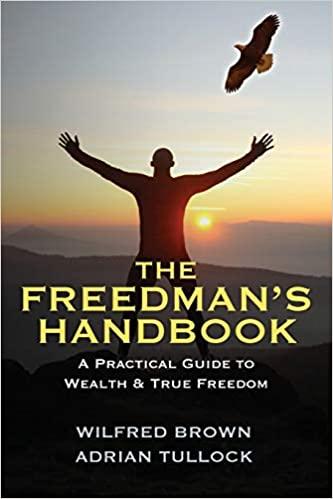Answered step by step
Verified Expert Solution
Question
1 Approved Answer
Go to Yahoo! finance and download monthly return series for the f our years (Jan 2019- Dec 2022) for the following three stocks: Oracle (ORCL),
Go to Yahoo! finance and download monthly return series for the f our years (Jan 2019- Dec 2022) for the following three stocks: Oracle (ORCL), General Mills (GIS), and Conoco Phillips (COP). For each stock, calculate the mean monthly return for each stock, standard deviaon, and list the highest two and lowest two month returns. In a couple of sentences, briefly describe (just intuively) which stock looks the safest, and which looks the riskiest. (10pts) 2. For each pair of stocks (i.e., ORCL-GIS, GIS-COP, and ORCL-COP), calculate the covariance in returns over the sample period. Also, report the correlaon coefficient for each pair of stocks. Which two stocks have the highest correlaon? Which two are least correlated? (5pts) 3. For each pair of stocks, calculate the expected return and standard deviaon of a porolio with weights that vary between 0% and 100%, in 10% intervals. For example, take ORCL-GIS. Your first porolio will be 0% in ORCL and 100% in GIS. The second porolio will be 10% in ORCL, and 90% in GIS. Your third porolio will be 20% in ORCL, and 80%in GIS, and so on, all the way unl your final porolio, which is 100% in ORCL, and 0%in GIS. Perform this same calculaon for the other two pairs of stocks. For each porolio, calculate the expected return and standard deviaon using your esmates from queson (2) above. HINT: Youre going to conduct calculaons for 11 porolios, for three different pairs of stocks, for a total of 33 return-standard deviaon pairs. (5pts) 4. Using EXCEL or a piece of graph paper (drawing by hand), make a plot with the quanes in part (3) above. The x-axis will be standard deviaon, and the y-axis will be expected return. Connect the dots within each of your three porolios. (5pts) 5. Idenfy with a red line or pen the set of efficient porolios in your graph. Efficient porolios are ones that, for a given standard deviaon, offer the maximum possible expected return. HINT: The result will be a funny looking curve that connects different parts of the parabolas you graphed in part (4). What statement can you make about the set of possible porolios that lie either underneath and/or to the right of the set of efficient porolios? (5pts) 6. Call porolio A the 50%-50% porolio between COP and GIS, and call porolio B the 50%- 50% porolio between ORCL and GIS. Conduct the same exercise (0-100, 10-90, 20-80, etc.) between porolios A and B as you did in part (3) using individual stocks. Here, the 0-100 porolio will be porolio A, the 10-90 will be 10% porolio A and 90% porolio B, etc. For each of these mixes between porolios A and B, calculate the expected return and standard deviaon. HINT: Youll want to start by calculang the monthly returns of porolios A and B, which will give you two me-series. Think about the returns of these porolios just like you would think about the returns of individual stocks. For example, you have an esmate of the mean return of porolio A, and an esmate of the volality of porolio A. Same for B. You can also calculate a sample covariance between the returns of porolio A and porolio B. You will use these quanes to trace out the curve required for this queson. (5pts) 7. Using a purple line, trace out the set of efficient porolios, taking into account the new porolios you calculated in part (6). How has this set changed, if at all, from the previous set of efficient porolios? What is the intuion behind this change i.e., has it improved the efficient froner? Why does this make sense? (5pts) 8. Augment the data set with returns from the S&P 500 Index (including dividends) over the same me period. Calculate the beta for each stock, which is the regression coefficient from the regression , = &, + ,where , is the return of stock i in month t, and &, is the return of the index in month t. Find the yield on the 10-year T-bill, and use this as a proxy for the risk-free rate. Taking the market risk premium of 6%, use the CAPM to esmate the expected return of each of the three stocks. (5pts) 9. How do the average returns for each of the three stocks compare to the predicons of the CAPM? Briefly speculate on reasons for any discrepancies. (5pts)
Step by Step Solution
There are 3 Steps involved in it
Step: 1

Get Instant Access to Expert-Tailored Solutions
See step-by-step solutions with expert insights and AI powered tools for academic success
Step: 2

Step: 3

Ace Your Homework with AI
Get the answers you need in no time with our AI-driven, step-by-step assistance
Get Started


